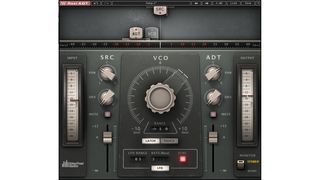
Everything was driven by V72 Siemens valve amps. Their first custom built console was the REDD. If any outside equipment was brought in it was rigorously tested, inspected and sometimes modified if they weren’t quite up to scratch. Much of the gear in the ‘60s and ‘70s were custom built by EMI technicians at the Record Engineering Development Department (REDD), including the majority of mixing consoles and tape machines. The recording equipment itself also helped shape the sound. They were breaking the rules, but intelligently thanks to their strict training.

When the counter culture of the ‘60s arrived it seeped into the studios, where technicians began to take risks and act more playfully when recording sound. When Winston Churchill visited before the war he exclaimed “My God, I thought I’d come to the wrong place. Initially Abbey Road was a deeply regimented operation, with engineers wearing full length white lab coats. But it wasn’t until 1962 when four young lads from Liverpool stepped into the building that the studio’s legacy would really begin to take shape. By this point, The Gramophone Company had merged with rivals Columbia to form Electric and Music Industries Limited (EMI) It’s from here on EMI Studios began to make a name for itself in the world of classical recording and opera, hosting artists like Fred Astaire, Judy Garland and Glenn Miller. The studio finally opened on the 12 th November 1931, hosting a celebratory opening recording session of the London Symphony Orchestra conducted by Sir Edward Elgar. Renovation and construction took nearly two years to complete, as no one at this point had taken on the task of building a facility like it. With the thumbs up given to find a new location for expansion, a nine-bedroom Georgian townhouse was chosen at number 3 Abbey Road. Although they offered great acoustics the needs of artists were beginning to change.

In the mid to late 1920s, Trevor Osmond Williams the chairman of the Gramophone Company (England’s largest manufacturer or records) was starting to notice the inadequacy of his two small recording studios at the company HQ in Hayes. It’s not surprising, after all it has been around for 85 years and during this time hosted a variety of musical talent. Ask just about anyone to name an iconic British recording studio and chances are they’ll answer with Abbey Road.


 0 kommentar(er)
0 kommentar(er)
